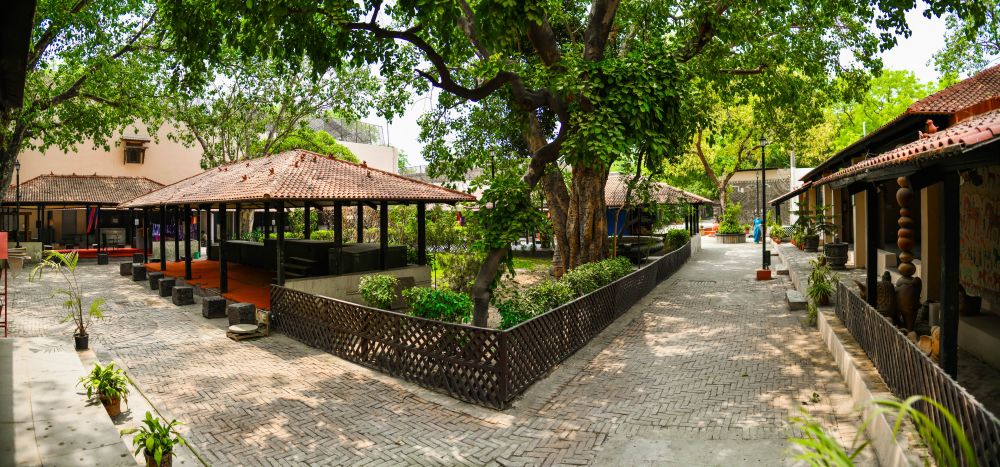

The National Handicrafts and Handlooms Museum, also known as the National Crafts Museum, is situated in the heart of New Delhi, India. This destination is a vibrant embodiment of India's rich and diverse craft heritage. Established in the 1950s by the efforts of the renowned freedom fighter Smt. Kamaladevi Chattopadhyay, it opened to the public in 1956. Its foundation was rooted in preserving and promoting the Indian handicrafts and handlooms that are an integral part of Indian culture and history.
The museum has since become an epitome of India's cultural ethos, attracting thousands of visitors yearly, including international tourists, craft enthusiasts, researchers, and students. Housing over 35,000 rare and exquisite pieces of handicrafts and handlooms, the museum stands as a testament to the skills and traditions passed down through generations.
Over the years, the National Handicrafts and Handlooms Museum has become a significant tourist attraction. Initially, it was more of a destination for connoisseurs and people interested in cultural heritage. However, with the growth of cultural tourism in India, the museum's visitor profile expanded to include a wider demographic, encompassing all age groups and nationalities. The tourism industry's focus on promoting the country's heritage and traditional arts has played a significant role in increasing the visibility and popularity of places like the National Crafts Museum.
The museum not only showcases artifacts but also serves as an interactive hub where live demonstrations by skilled artisans are a regular feature. These live demonstrations offer visitors a chance to witness the creation of traditional Indian crafts, providing an immersive and educational experience.
In recent years, there has been a significant push towards experiential and educational tourism, where travelers seek to engage with the local culture and learn new skills. The National Handicrafts and Handlooms Museum has adeptly adapted to these trends by providing workshops, cultural events, and thematic exhibitions that align with the interests of modern tourists.
Eco-tourism and sustainable travel practices are also shaping how destinations like the museum operate and attract visitors. The emphasis on sustainable art forms and the use of eco-friendly materials in crafts have piqued the interest of environmentally conscious travelers. As a result, the museum is not only a place of preservation but also a platform for the promotion of sustainable practices in the arts and crafts industry.
As the travel industry continues to evolve, the National Handicrafts and Handlooms Museum is poised to remain a cherished destination for those looking to explore India's artistic heritage. With the further integration of digital tools and virtual reality experiences, the museum can offer a blend of traditional and modern ways of engagement, enhancing the visitor experience and ensuring that the wealth of Indian handicrafts remains accessible to future generations.
Continued investment in the museum's infrastructure, coupled with the Indian government's initiatives to promote tourism, indicates a bright future for the National Handicrafts and Handlooms Museum as a cornerstone of cultural tourism in Delhi.